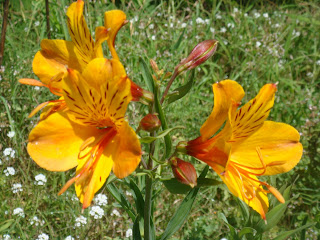|
Trees for Planting in Lawns Many trees do not like to be planted in lawns. They perform best with deep infrequent water rather than the shallow frequent water we put on our lawns. We often see problems with lawn planted citrus in particular. Here is a list I’ve started. If you have any suggestions email me at nursery@lasumida.com. Planting a tree is a big commitment. It will probably outlive you. It’s important to plant the right tree in the right place. My favorite website for choosing trees is http://selectree.calpoly.edu They have over 6000 photos of over 1000 trees. You can also search for trees by many attributes. Some of these include: climate zone, soil type, size, utilities, root damage, growth rate, disease and pest resistance, fire danger, flower color, etc. etc. etc. I always advise customers looking at trees to “do the research’ and this website makes it easy. Take care, D Arbutus unedo Strawberry Tree |
|
Betula Birch |
|
Geijera parviflora Australian Willow |
|
Gingko Biloba Maidenhair Tree |
|
Hymenospermum flavum Sweet Shade |
|
Koelreuteria Chinese Flame Tree and Goldenrain Tree |
|
Liquidambar Sweet Gum |
|
Magnolia grandiflora ‘Little Gem’ |
|
Magnolia soulangeana hybrids |
|
Maytenus boaria Mayten |
|
Melaleuca quinquenervia Paperbark Tree |
|
Pistacia chinensis Chinese Pistache |
|
Podocarpus gracilior Fern Pine |
|
Salix matsuda ‘Tortuosa’ Corkscrew Willow |
|
Tipuana Tipu Tipu Tree |
|
Tristaniaopsis laurina Water Gum |










